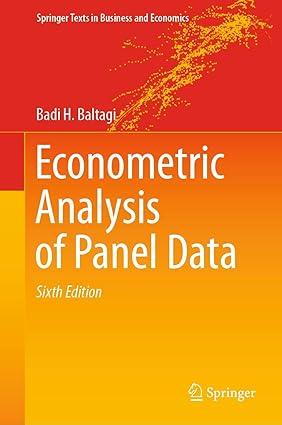Using the gravity model for foreign direct investment (FDI) of Egger and Pfaffermayr (2004) considered in Problem
Question:
Using the gravity model for foreign direct investment (FDI) of Egger and Pfaffermayr (2004) considered in Problem 7.17 where they applied a static Hausman and Taylor (1981) model, you are asked to replicate the results reported in Table 4 of Kripfganz and Schwarz (2018) now for a dynamic version of this gravity model using the xtseqreg command in Stata. Are the results sensitive to introducing dynamics?
Data From Problem 7.17:
Distance, Trade, and FDI. Egger and Pfaffermayr (2004) study the effects of distance as a common determinant of exports and foreign direct investment (FDI) in a three-factor New Trade Theory model. They use industry-level data of bilateral outward FDI stocks and exports of the U.S. and Germany to other countries between 1989 and 1999. They find that distance exerts a positive and significant impact on bilateral stocks of outward FDI of both the U.S. and Germany. However, the effect of distance on exports is much smaller in absolute size and significantly negative for the U.S. but insignificant for Germany. Using the Egger and Pfaffermayr (2004) panel data set, which can be downloaded from the Journal of Applied Econometrics website, replicate Table II on pages 236-237 of that paper and the associated test statistics. In particular replicate the Within and Hausman-Taylor estimation for real bilateral exports and real bilateral FDI. Do that for US and Germany.
Step by Step Answer:






